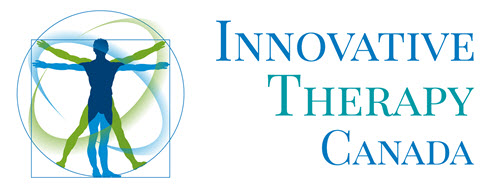Patellofemoral Pain Syndrome is one of the easiest knee conditions to cure because we identify the mechanism that caused it and correct it. We successfully treat this condition almost on a daily basis, with our professional use of shockwave therapy. The powerful sound waves break apart the connective tissue’s disorganized fibres, allowing the patella to return to its normal position in the knee.
Description: What Is It?
Patellofemoral Syndrome is a condition where the muscles which attach to your knee cap are not pulling equally on it to maintain it in a neutral position when the joint is moved. The muscles on the front of your upper leg are called quadriceps because there are four of them (quad). Patellofemoral syndrome results when two of them are not pulling equally. the other two have no ability to pull your knee cap out of alignment so are not involved.
Symptoms:
The most obvious symptom of patellofemoral syndrome is the inflammation on the outside aspect of your knee cap which is painful. You will feel a constant ache, sometimes deep into the knee, and at times down the shin into the foot. It is infamous for causing pain while walking stairs. You may even experience a sharp knife-like pain into the knee and will certainly experience weakness at the knee joint.
Causes:
- A weak vastus medialis muscle on the inside of the thigh just above the knee.
- Tight, fibrotic vastus lateralis muscle on the outside of the thigh.
- Extremely tight iliotibial (IT) band of fascia on the outside of the thigh.
- Early stage arthritis on the underside of the knee cap.
- Alignment issues with the foot, hip, or pelvis.
- Short leg.
- Foot which has previous trauma as in a fracture has plates pins or screws, has bunions or nerve compression syndrome.
The most common cause for patellofemoral syndrome is an imbalance in the strength of two of the 4 quadriceps muscles in your thigh. The large powerful vastus lateralis muscle on the outside of your thigh overpowers the much smaller vastus medialis muscle on the inside aspect of your knee just above the kneecap. If the outside muscle pulls the kneecap outward due to its power, then your knee cap will bind on the outside edges of the femur where it sits. If the smaller vastus medialis muscle on the inside of the thigh were sufficiently strong enough to overpower the outside one, then your knee cap would remain neutral, straight ahead in perfect alignment.
What Is Really Happening?
The underside of your kneecap is wedge-shaped, like a v. This allows your knee cap to float from left to right as your knee joint bends and straightens. If it was not V-shaped underneath, and it was more square, your knee cap would bind all the time with any weakness in the two muscles which keep it straight.
Since your outer vastus lateralis muscle is usually the stronger of the two, your knee cap will tend to shift more towards the outer edge of the knee joint beneath the knee cap. If it shifts too far to the outside, then it will bind and drag as it moves down into its groove when load bearing. It is this constant grinding on the outside edge of the joint which causes inflammation, pain, and weakness in the joint.
Treatment:
If the large vastus lateralis muscle on the outside of your thigh is too tight or fibrotic, we will break apart the fibrosis returning it to a normal length.
If your vastus medialis muscle on the inside of your knee is too weak, we will show you how to strengthen it, and we will temporarily weaken and stretch the outside thigh muscle.
Any inflammation will promptly be removed using the shockwave therapy.
Any roughness of the cartilage beneath your knee cap will be smoothed out, stopping the grinding sound that this condition is so famous for.
We employ our famous shockwave/neuromuscular combination treatments to return all of the muscles in the region to their normal lengths, remove any fibrosis, remove any swelling, and correct any mechanical faults that may exist with your pelvis, hip, and/or feet.
If you are interested in scheduling a consultation/assessment, please contact us at your convenience



